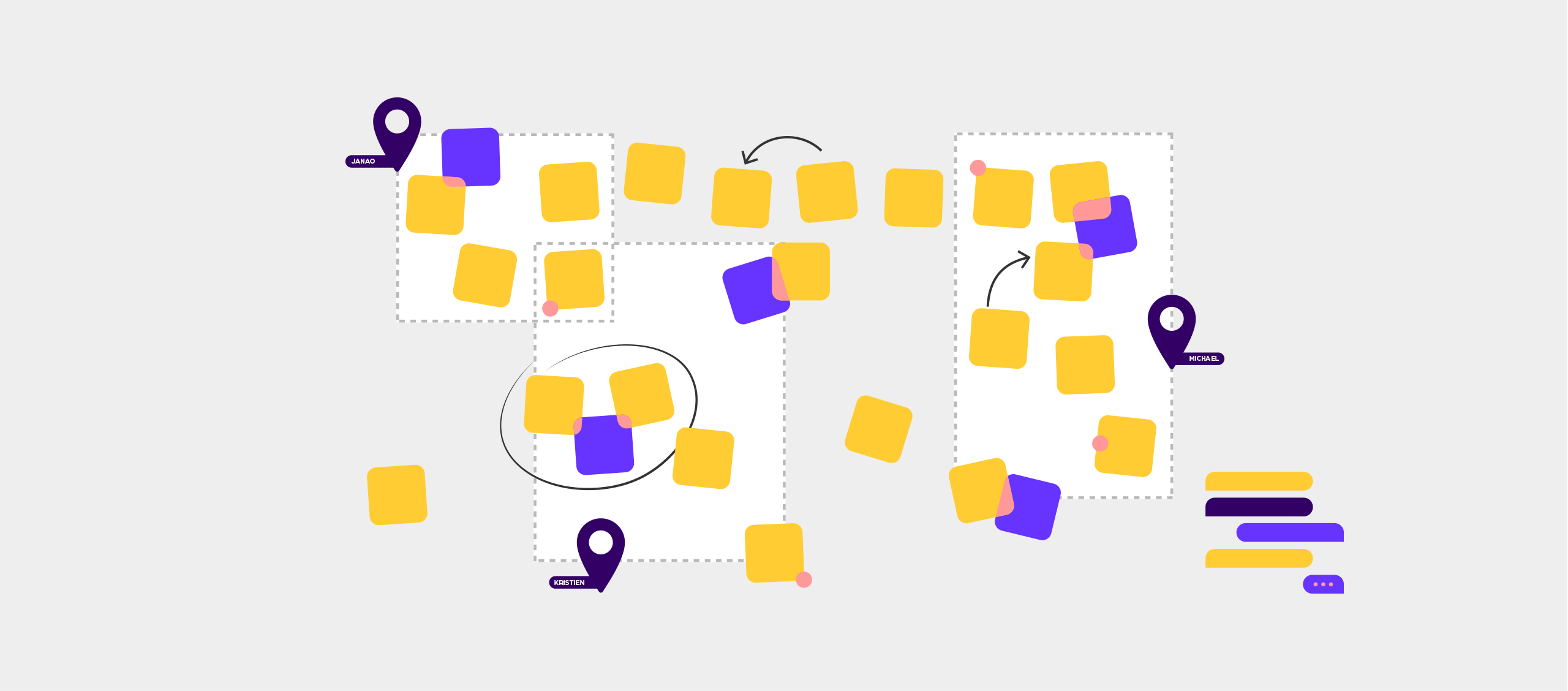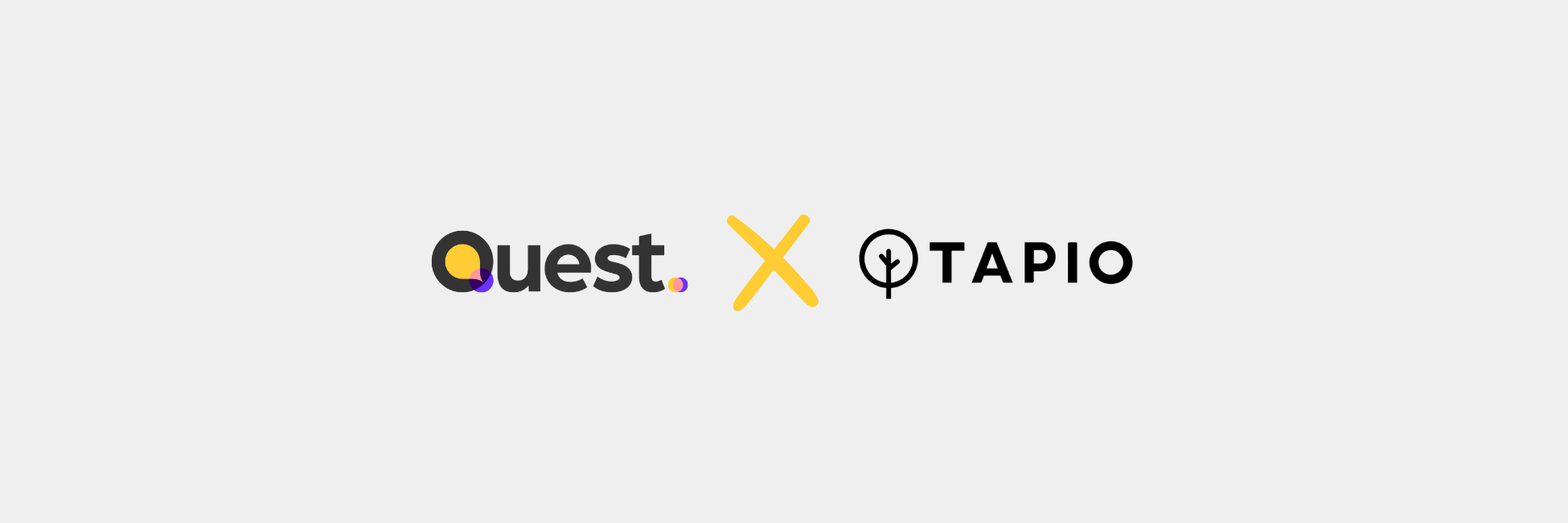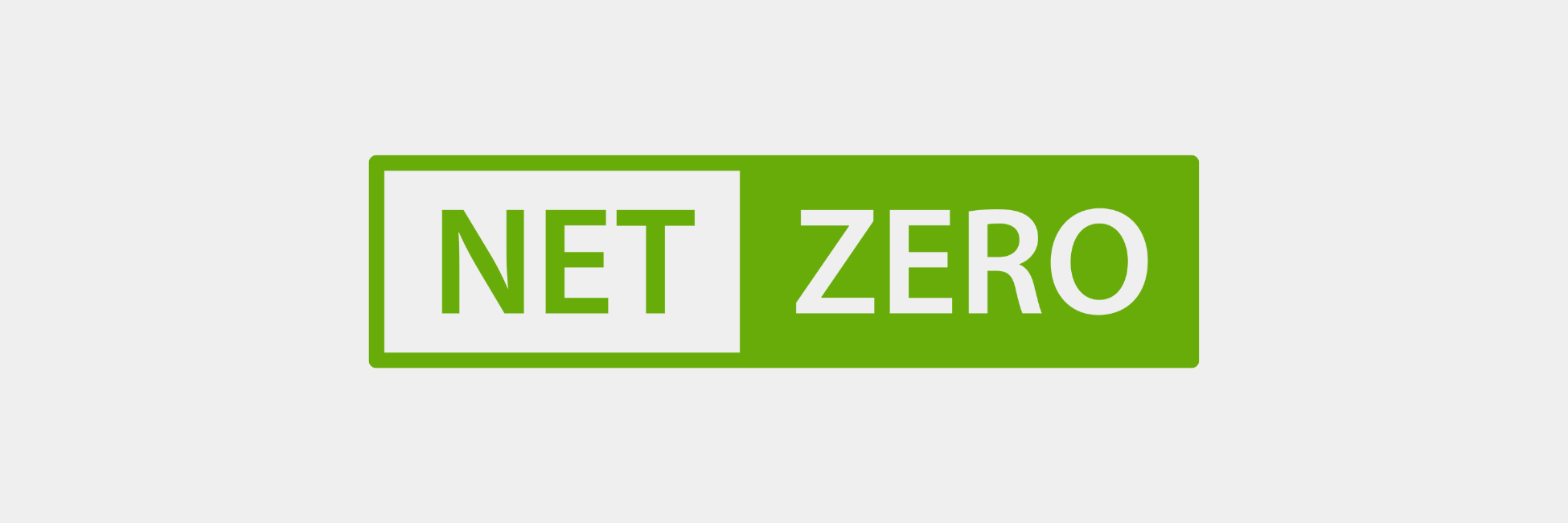Page content
Miro
A must for every remote workshop. Endless whiteboard space with lots of drawing tools, post-its (very important) and even a video chat integration. We use this tool for brainstorm sessions, user journey mapping and business modeling. Because of the possibility to collaborate on the same board, leave comments and talk to each other at the same time, Miro is the ideal tool for both creative and strategic workshops.
We like:
- Because of the video chat integration, there’s no need for a secondary communication program. As a result, there are way less technical difficulties.
- Special kudos to the sticky note capture: take a picture of your post-its in the Miro app, wait a second and Bam! You have digital post-its on your whiteboard.
The intuitive navigation and easy workflow make it easy for people to quickly pick up this tool so no time is wasted at the beginning of a workshop.
– Janao Denys, Business & Service Designer – Quest
We don’t like:
- The wide variety of formatting options can cause participants to spend a lot of time on the look of their board and distract them from the workshop.
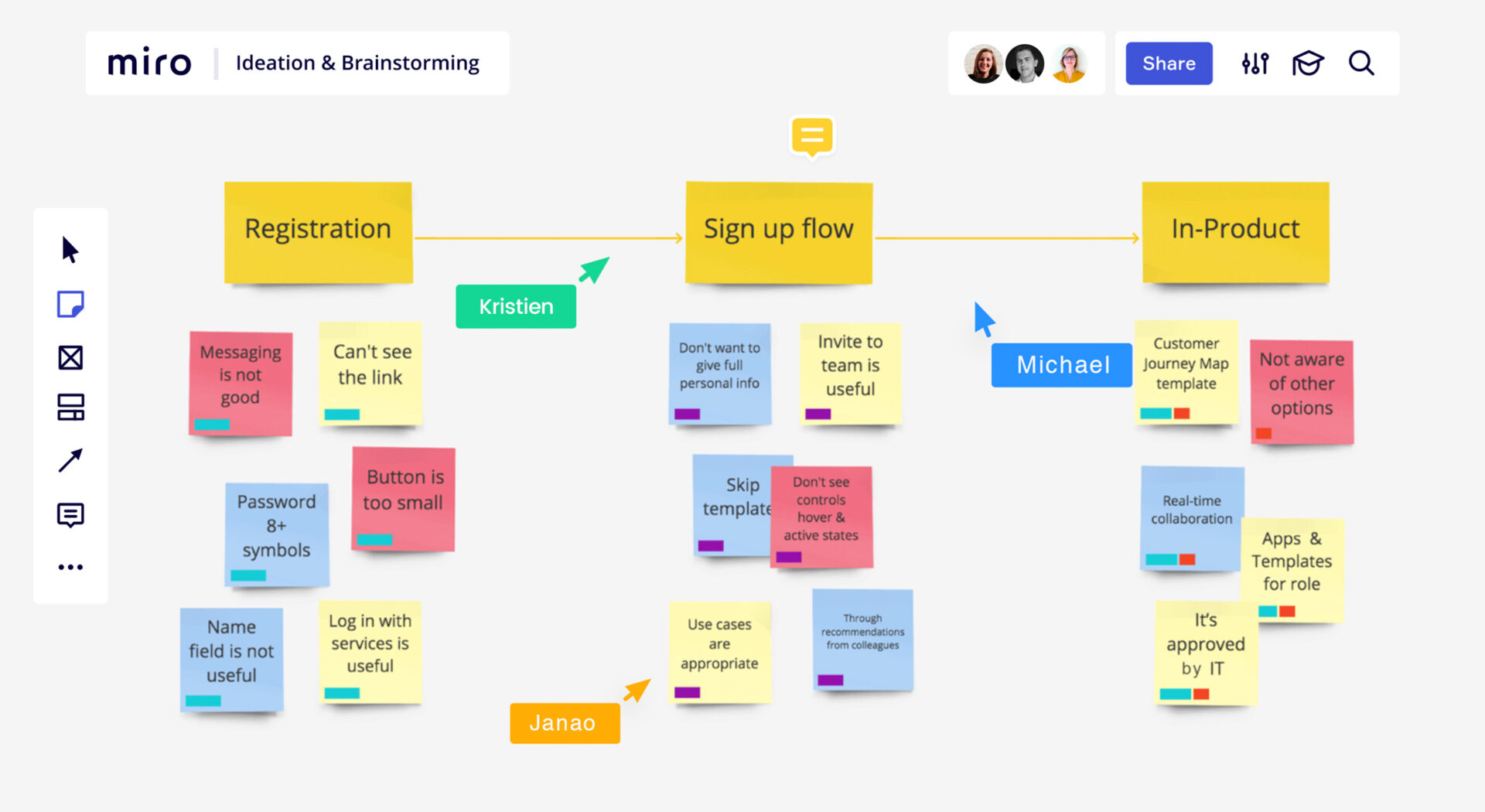
Figma
Collaborating on an interface design in real-time? Enter Figma. Thanks to this fast, cloud-based UX design tool, it is easy for us to simultaneously work on the same design. Sharing a design is also very simple and reviewers can easily comment on specific elements in the design.
I can follow what someone else is doing in real time which comes in handy for design discussions. There’s no need for screen sharing.
Kristien Van Wilderode, Art Director & UX Designer – Quest
We like:
- There is a browser and a desktop app, so if you just want to comment on a design, it’s not necessary to install the program.
- Collaboration in real time is very stable and fast. Real time is really real time, the program is never lagging.
We don’t like:
- What we miss the most is a search option. Trying to find that one specific screen in a big project can sometimes be a challenge.
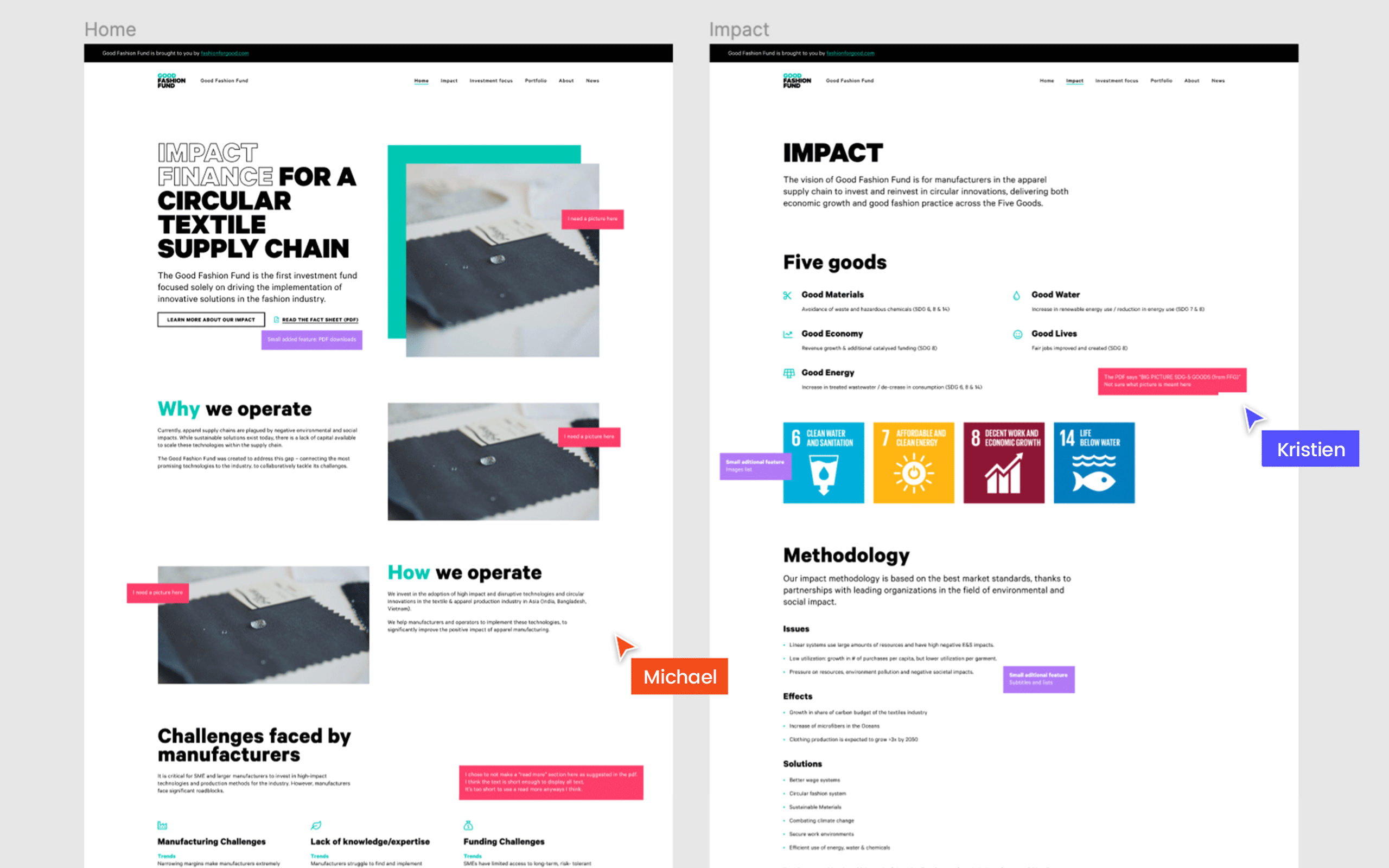
Slack
All hail morning check-ins! A couple of days without social interaction can’t possibly be good for anyone. And imagine forgetting what your colleagues look like. This communication tool is found in most lists of “tools for remote work”, but Slack is just indispensable for us.
By chatting, calling and video chatting we keep in touch on a daily basis and internal mail traffic is almost non-existent. But that is not the biggest benefit. For us, Slack’s strength is the possibility to simultaneously have formal and informal conversations.
There should also be room for casual conversations and fun. We don’t just talk about work, we also share other things as we normally would at the office. And why not have a remote afterwork party every now and then?
Kristien Van Wilderode, Art Director & Ux Director – Quest
We deliberately chose to make room for those informal conversations. Especially during this period in which we don’t see each other, it is important that we can also talk about things other than work. There needs to be room for laughter and to share emotions and events with each other. That’s why we created a #general channel on which anything and everything can be discussed and a #quoteboard to post funny quotes from each other (with as little context as possible of course).
We like:
- Status updates: with an icon and a short description everyone in the team knows what you are working on.
- We have a channel for every project on which we can centralize all communication.
- We can invite customers to certain channels. This makes communication much easier and eliminates most mail traffic. We especially prefer this workflow with our international clients.
We don’t like:
- Slack can also be a distraction, which is detrimental for productivity. A little self-discipline, please!
These tools help us tremendously to keep the creative process going without being in the same room. But they are also just tools. The creative process is still about people, which is why we think it is so important to call every day.
At Quest, we also know when someone isn’t feeling comfortable in her/his skin. We talk about that very transparantly and we take those feelings into account. Creative processes are shaped by people, not by tools.
Michael Boschmans, Founder – Quest
On Monday, Wednesday and Friday we go into these meetings with a specific objective. This is how we structure our week. Even when we are not working remotely, we use this method which we thankfully borrowed from our colleagues from Base Design:
- On Monday we discuss the challenges of the week. Everyone writes down 3 goals for the coming week on post-its and puts these on the wall. These can be personal goals such as ‘clean my inbox’ or project-related goals such as delivering a design.
- On Wednesday we discuss current projects, research, new discoveries, inspiration,… but we especially make room to talk about how everyone is feeling. It is important to us to give everyone the space to share something if they want to.
- On Friday we look back on the past week. Were all our goals achieved? If not, how come? What did we do well and what could we do better in the future?
This method gives you more insight into the week and the work of your colleagues and creates windows to talk about personal stuff. At Quest we believe this contributes to creating a close-knit team that can work together in an inclusive and effective way.
And that team is at the core of creativity and success. Even in this difficult period of time.
